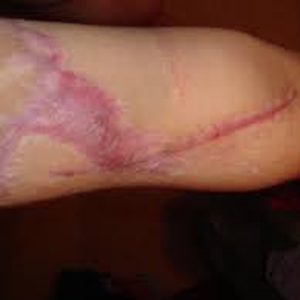Contents
Surgery and scar: all you need to know about reconstructive surgery for scars
A frequent reason for consultation in plastic and cosmetic surgery, scars are the result of a skin lesion following a surgical intervention or an injury. There are several types of scars and different treatments to reduce them.
What is a scar?
The appearance of a scar follows a lesion of the dermis. After surgery or injury, skin cells activate to repair and heal the area. When closing, the wound leaves a scar, the appearance of which varies depending on the depth of the skin trauma.
If a scar never completely disappears, there are techniques that can help reduce it.
The different types of scars
- The retractile scar: it is due to a narrowing of the scar area and forms a fibrous cord, relatively rigid and slightly raised compared to the level of the surrounding skin;
- The hypertrophic or keloid scar which is raised;
- The hypotrophic scar which is a hollow scar.
The treatments offered will not be the same depending on the scars. A first careful clinical examination is necessary to make a diagnosis and define the most appropriate technique for the patient.
Doctor David Gonnelli, plastic and aesthetic surgeon in Marseille insists on the need to distinguish the normal scar, “which follows the natural folds of the body”, from the unsightly scar which is “normal, but which can be badly located”. For these two cases, “the treatment falls within the scope of cosmetic surgery”, underlines the specialist. On the other hand, the pathological scar such as hypertrophic or keloid is “a real disease for which there are medical treatments”.
Techniques to try to reduce a scar before operating
The appearance of a scar can change over several months, or even years. It is therefore necessary to count between 18 months and 2 years before starting a treatment aimed at reducing the scar. It is believed that when the scar is the same color as the skin, no longer red and no longer itchy, the scar maturation process is complete.
Several non-invasive techniques can be tried before making an appointment for plastic surgery:
- the laser, particularly recommended for hollow acne scars;
- peeling, effective on superficial scars;
- massages to be performed by yourself or with the help of a physiotherapist;
- pressotherapy to be performed by a healthcare professional which consists of flattening a scar by compressing it;
- dermabrasion, that is to say the act of sanding the skin to be treated using a specialized tool, used by a healthcare professional.
Surgical techniques to reduce the scar
In some patients, the operation consists of removing the area of the scar and replacing it with a new suture made to obtain a more discreet scar. “In many cases, the procedure uses a special incision line, a process designed to ‘break up’ the main axis of the initial scar. The scar is then reoriented according to the natural tension lines of the skin so as to reduce the tension exerted on the wound ”, explains Doctor Cédric Kron, cosmetic surgeon in Paris in the 17th arrondissement.
If the scar is very extensive, other techniques may be considered:
- a tissue transplant;
- a local plasty to cover the scar with skin surrounding the area.
Lipofilling by fat injection to improve the appearance of the scar
A popular practice for breast augmentation, buttocks or the rejuvenation of certain parts of the face, lipofilling can also fill a hollow scar and improve the suppleness of the skin. The fat is removed by liposuction under local anesthesia and placed in a centrifuge in order to be purified before being then reinjected into the area to be treated.
Operative suites
After the operation, avoid stressing the area as much as possible in order to limit the tension on the operated scar during the various healing phases.
Regular checks will be carried out by the surgeon, in particular in people suffering from hypertrophic or keloid scars in order to identify upstream the possible recurrence of this disorder.










